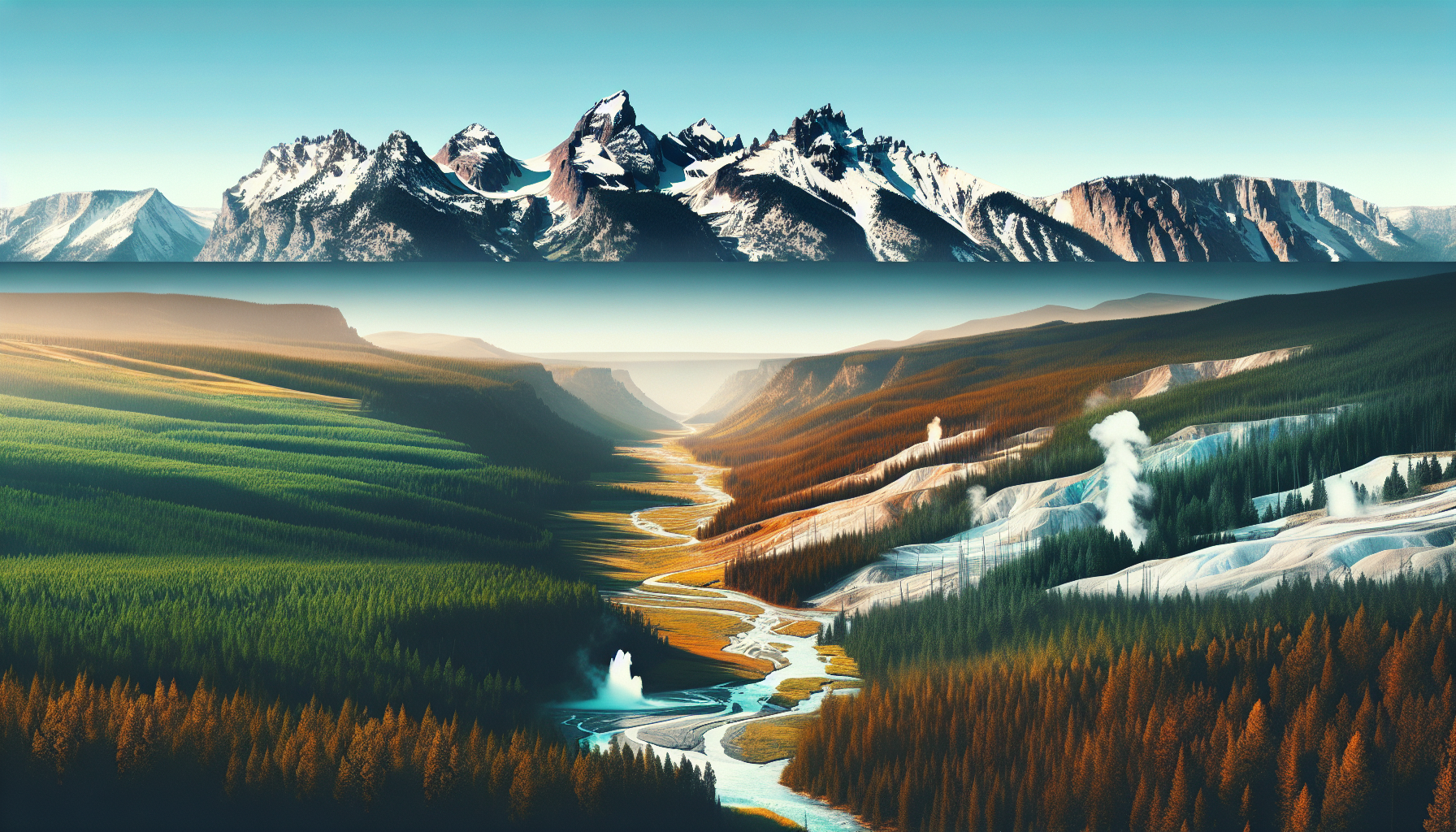Yellowstone National Park, located primarily in Wyoming, stretches into parts of Montana and Idaho. It offers a breathtaking panorama of pristine lakes, thunderous waterfalls, verdant forests, and majestic mountain ranges. Undoubtedly, the park’s most notable feature is its geothermal activity, with approximately 10,000 geysers, hot springs, and other geothermal sites. No where else on Earth can one witness such a diverse array of geothermal wonders.
Among these, Old Faithful geyser is the standout star. Today, it erupts about every 90 minutes, shooting boiling water hundreds of feet into the air.
Visitors from across the globe flock to marvel at this natural phenomenon, which serves as a testament to the park’s geologic dynamism.
Equally awe-inspiring are the park’s vibrant hot springs, particularly the Grand Prismatic Spring. Its stunningly vivid hues, attributable to different species of heat-loving bacteria, offer an ethereal, otherworldly experience that is not to be missed.
As captivating as the park’s geothermal features are, they don’t overshadow its rich biological diversity. Yellowstone is acclaimed as one of the largest, nearly intact temperate-zone ecosystems in the world. The park is home to an impressive array of animals, including grizzly and black bears, gray wolves, bison, elk, and countless bird species.
The American bison, often symbolically linked with Yellowstone, can be seen roaming freely throughout the park. This majestic animal, once on the brink of extinction, now thrives within the park’s boundaries, a testament to successful conservation efforts.
Yellowstone also plays host to a complex and fascinating predator-prey dynamic. The reintroduction of wolves to the park in the mid-1990s marked a significant turn in the park’s ecological storyline. This apex predator’s presence has had ripple effects throughout the ecosystem, influencing everything from elk behavior to streamside vegetation.
The park’s magnificence extends beyond its wildlife and geothermal wonders. Yellowstone Lake, one of the largest high-altitude lakes in North America, offers tranquil beauty and a serene environment for fishing, boating, and bird-watching.
A journey through Yellowstone National Park wouldn’t be complete without an appreciation of its historical and cultural significance.
The park’s ancient heritage is evident in its preserved archaeological sites, historical buildings, and artifacts.

Visitors can learn about the park’s indigenous peoples, early explorers, and the ongoing efforts to conserve and protect this precious jewel of nature.
Overall, Yellowstone National Park offers an unforgettable encounter with nature’s raw power, stunning beauty, and diverse wildlife.
It’s a place where one can witness the earth’s forces at work, explore unique ecosystems, and delve into rich historical narratives.
This magical, ever-changing landscape serves as a reminder of the immense value of preserving our natural world for future generations.
Leave a Reply